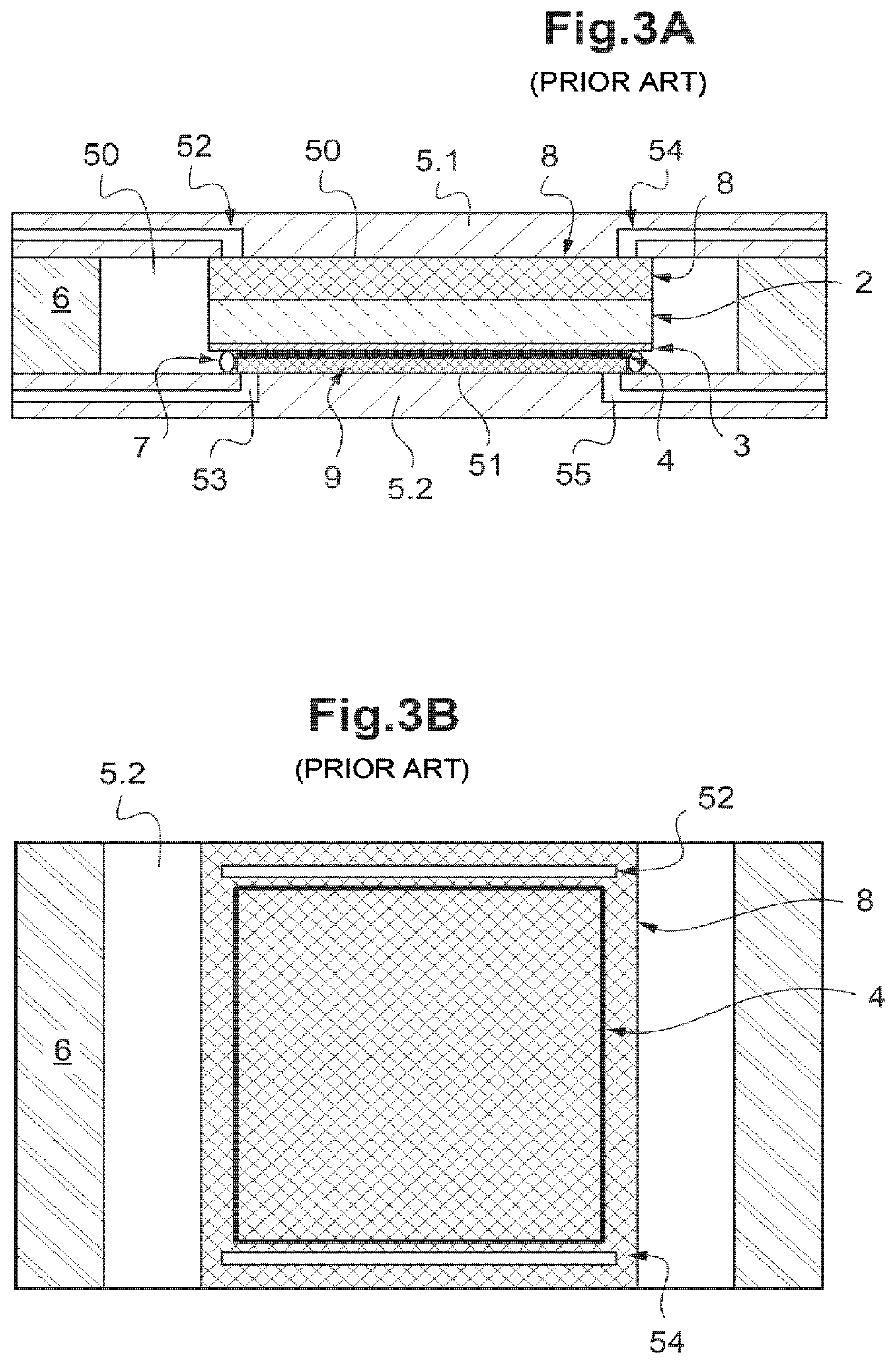Water electrolysis reactor (SOEC) or fuel cell (SOFC) with an increased rate of water vapour use or fuel use, respectively
a technology of water electrolysis reactor and fuel cell, which is applied in the direction of fuel cells, electrochemical generators, electrical equipment, etc., can solve the problems of loss of yield, damage to the electrolyzer, and drop in yield, so as to reduce mechanical stress, increase the maximum degree of conversion, and ensure the effect of electrical continuity in the stack
- Summary
- Abstract
- Description
- Claims
- Application Information
AI Technical Summary
Benefits of technology
Problems solved by technology
Method used
Image
Examples
Embodiment Construction
[0083]Other advantages and features of the invention will become more clearly apparent on reading the detailed description of examples of implementation of the invention, given by way of nonlimiting illustration with reference to the following figures, in which:
[0084]FIG. 1 is a schematic view showing the operating principle of a high-temperature water electrolyzer,
[0085]FIG. 2 is a schematic exploded view of a part of a high-temperature steam electrolyzer (HTE) of SOEC type comprising interconnectors according to the prior art,
[0086]FIGS. 3A and 3B are respectively longitudinal cross-sectional and top schematic views of anindividual unit of an FITE electrolyzer or of a fuel cell of SOFC type according to the prior art showing the configuration of the seals, electrical contacts and distribution of gases within the stack,
[0087]FIGS. 4A and 4B repeat FIGS. 3A and 3B and show the circulation of the steam and of the hydrogen produced, according to the prior art,
[0088]FIG. 5 is a view id...
PUM
| Property | Measurement | Unit |
|---|---|---|
| electron-conducting | aaaaa | aaaaa |
| height | aaaaa | aaaaa |
| surface area | aaaaa | aaaaa |
Abstract
Description
Claims
Application Information
 Login to View More
Login to View More - R&D
- Intellectual Property
- Life Sciences
- Materials
- Tech Scout
- Unparalleled Data Quality
- Higher Quality Content
- 60% Fewer Hallucinations
Browse by: Latest US Patents, China's latest patents, Technical Efficacy Thesaurus, Application Domain, Technology Topic, Popular Technical Reports.
© 2025 PatSnap. All rights reserved.Legal|Privacy policy|Modern Slavery Act Transparency Statement|Sitemap|About US| Contact US: help@patsnap.com



